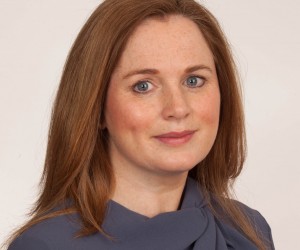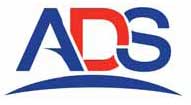
About the Author
Mary Kearney
Head of PR and Media, ADS Group
When writing this article (June 2015), the U.K. was just a few weeks into a new Government following an intensely-fought election campaign which routinely featured politicians wearing hard hats and using manufacturing backdrops to champion the importance of industry in rebalancing the economy.
Industrial growth is an obvious economic barometer, it is also a national success story; ADS Group represents some of the U.K.’s biggest manufacturing sectors with aerospace, defense, and security all providing high-skilled, high-tech, well-paid jobs.
The U.K.’s aerospace industry is the largest in Europe and second only the U.S. Around half of the world’s modern large aircraft fly on wings manufactured in the U.K. and a Rolls-Royce powered aircraft takes off somewhere in the world every two and a half seconds. The sector supports more than 109,000 direct jobs and turns over $41bn annually, 91% of which is generated by exports.
Crucially, the U.K.’s aerospace sector provides excellent regional employment opportunities with earnings almost double that of the national average wage. There is now around nine years’ work-in-hand and the sector continues to grow against the backdrop of a wider decline in other manufacturing-based sectors industries.
All of this bodes well for a market that looks set to see exponential growth; by 2032 it is estimated that worldwide more than 29,000 new large civil airliners, 24,000 business jets, 5,800 regional aircraft, and 40,000 helicopters will be required. Given the U.K.’s technical advantage in developing and manufacturing some of the most complicated and high tech parts of modern aircraft, it is in a strong position to respond to the potential presented by this growth.
Recognizing the strategic importance of aerospace to the U.K. economy, and the vital role that growing export market share plays in sustaining its leading position, the U.K. Government and industry came together to develop an industrial strategy as a way to tackle challenges and better exploit opportunities. The Aerospace Growth Partnership (AGP) was established in 2012, with the combined goal of securing the future of the U.K. aerospace industry for the next 20 years and beyond.
This partnership approach is already influencing international perception of the U.K. as a place to do business. Support provided through the AGP has created an attractive and competitive environment for investment; almost three quarters of aerospace companies plan to increase investment during the coming year with one in four looking at reshoring activity to the U.K.
With strong export growth across Europe, the U.K. is naturally keen to explore boosting this in the U.S. Last year alone, the U.K. aerospace industry’s exports to the U.S. totaled in excess of $7.5bn, making it the second largest export market for the U.K. behind Europe. With high-demand for technical innovation and unique investment opportunities the U.K. provides the ideal backdrop for international investors – last year the U.K. invested in $12bn worth of imports from the U.S.
To this end, the Government’s UK Trade and Investment (UKTI) department has a focus on enabling British companies to win American business, and one key area for business development opportunities exists within the maintenance, repair, overhaul, logistics, and support services market.
U.K. Government trade and investment priority has focused on winning aerospace business from the U.S. For U.S. firms seeking access to new European build programs, technology development partnerships or R&D, then the U.K. is an ideal location as Europe’s largest aerospace hub.
This October the U.K. will host Aerodays 2015; a flagship conference that brings together experts, industry leaders and politicians from around the world for a three-day event that will look at the future of flight.
Held almost as often as the Olympics, Aerodays 2015 is run by the European Commission in order to focus global attention on collaborative research and innovation across the aviation sector. The conference presents an important opportunity to showcase the pioneering technical developments within aerospace for which it is internationally renowned.
Against this backdrop, Aerodays 2015 is being hosted in an appropriate location. International experts will be welcomed to this unique forum to discuss strategic perspectives in aeronautics and air transport, in a country that is pioneering technological developments using a highly original partnership approach.
Although there are differences between the U.S. and the U.K. as countries in which to do business, there are more similarities, and the nature of doing business is closer to the U.K. than most other countries. Combined with the shared language and similar, but not identical, cultures, this is a significant advantage for both U.S. and U.K. companies.
Interestingly, Aerodays comes to the U.K. at a time when the country is facing the first referendum about its membership of the European Union since 1975. Although a date for the referendum is yet to be set, the debate is already becoming fierce. In a recent analysis carried out by ADS, it found that the overwhelming view of Britain’s aerospace sector is that E.U. membership is beneficial for business.
For the U.K. and the U.S., business will no doubt continue as usual. Shared language and similar cultures being two important factors that continue to influence successful and enduring trading links.
Further Information
For further details, please contact:
Website: www.adsgroup.org.uk
Twitter: @ADSgroupUK
Blog: blog.adsgroup.org.uk
The ADS Group is the premier trade organization advancing the U.K. Aerospace, Defense, Security and Space industries. Farnborough International Limited (FIL), which runs the Farnborough International Airshow, is a wholly-owned subsidiary.
Mary Kearney is the Head of PR and Media for ADS Group. Her career includes eight years at Heathrow Airport where she worked on the construction of Terminal 5 and the development of the new Terminal 2. Before joining ADS Group, Mary led communications for The Times newspaper.
